Review: 2013 Dodge Challenger SRT8 392 (Video)

Last time we had a Challenger SRT8 to review, well, we didn’t review it so much as we burnt the rubber off the rear wheels. Sorry Dodge, we couldn’t help it. After a few Facebook requests, we put Dodge’s 470HP retro coupé back on our wish list and someone at Chrysler decided to trust me with their retro cruiser. If you couldn’t afford that Challenger in the poster on your wall when you were in college, click through the jump to find out what Dodge’s 470HP two-door is like to live with for a week before you throw down 45-large on this retro bruiser.
Exterior
Designing “retro” sounds easy to me. You pull out a picture of ye olde Challenger from 1972, put it next to a picture of your largest sedan and make the shapes fit. Next you round things off a bit, tack on some 5MPH inspired bumpers, spray it with metallic paint and hey-presto, you have a modern Challenger. You also have one enormous coupé. Sure, Chrysler says the “LC” platform Challenger is shorter than their “LX” platform sedans, but you’d be hard pressed to say where inches were excised. The result is a heavyweight muscle car with a wheelbase 9-inches longer and a body that’s 10-inches longer than Ford’s pony car.
Parked next to the Camaro and Mustang, the Challenger dwarfs them both like the Jolly Green Giant next to Little Pea. This means comparisons between the three muscle cars is difficult. It doesn’t make rational sense either because I have a hard time believing anyone will seriously cross-shop a Mustang Boss 302 and a Challenger SRT8. Why? They’re just not the same kind of car. While the Challenger’s portly dimensions are likely to turn off some shoppers, I was strangely intrigued. But then again, I have a soft spot for big Chryslers having owned both a Chrysler LHS and an Eagle Vision. The size (visual and on paper) of this beast brought another vehicle to mind: the BMW 650i. Blasphemy? Perhaps, but they’re about the same size.
Interior
2008 is an important year to keep in mind as it was post-Mercedes but pre-Fiat. It was in that Cerberus window that the Challenger was born. As a result, the cabin’s plastics aren’t as awful as the first generation 300/Charger, but neither are they as good as the 2011 revisions of the same. Still, the Camaro and Mustang don’t exactly come covered in the best plastics that money can buy, so while the Challenger feels a little rubbery and low-rent, the American competition isn’t much better.
On the bright side, the SRT8 392 version of the Challenger is brought up-market by standard leather upholstery with Alcantara seat and door inserts, high levels of standard equipment and one of the best OEM steering wheels available. The new SRT wheel is chunky, deeply cushioned, covered in soft leather, heated, thoroughly addictive and enough for me to forgive the rubbery dash and oddly positioned door handles. Of course, only a few days before the “publish” button was pressed on this review, Chrysler announced a “core” version of the SRT8 Challenger that drops the price by removing the leather and other options. Full details on the low-cost model have yet to be released at this time.
Front seat comfort proved excellent for long trips, although the seat design suffers from the same problem as the Chrysler 200: the bottom cushion is shaped like a “dome” making it feel as if you’re sitting “on” the seat and not “in” the seat. To hold you “on” the leather clad gumdrop during the inevitable shenanigans 470HP will invite, Dodge severely bolstered the seats. Thankfully (and unlike the Mercedes C63), Chrysler was kind enough to make the seats wide enough for normal Americans. Back in 2011 when the 392 debuted, an ivory/blue leather interior was offered, but for 2013 your only options are black on black or the red and black interior our tester wore.
Thanks to the proportions and long wheelbase, rear accommodations are large, comfortable and “normally” shaped. What do I mean by that? Sit in a Mustang, Camaro, or most other two-door four-seat coupés and you’ll notice the seat backs are set at an odd angle to “improve” the headroom and legroom numbers in an otherwise small rear compartment. Despite having (on paper) only three inches more legroom and two more inches of headroom than the Mustang or Camaro, the rear cabin feels cavernous. It’s even possible to squeeze a third adult in the rear of the Challenger, something you can’t do in the four-seat Camaro or Mustang. Chrysler also designed the optional $995 sunroof so that it doesn’t cut into rear headroom.
When it comes to cargo schlepping, Dodge went retro with a trunk lid rather than a modern trunk “hatch.” The result is a high lift-over making it difficult to lift heavy suitcases into the trunk without scuffing the rear bumper. On the bright side, the cargo hold is a cavernous 16.2 cubic feet, a whopping 44% larger than the Camaro. While the Challenger lost points in our exclusive Trunk Comfort Index (see the video segment) for having cheap trunk fabric, it gained more for having trunk hinges that don’t cut down on usable trunk space.
Infotainment
Dodge’s snazzy new engine didn’t bring Chrysler’s new uConnect system with it leaving shoppers to choose from three retro radio and navigation options. We start off with a base 6-speaker Dodge-branded audio system and a 6.5-inch touchscreen head unit with a standard CD/DVD player, Bluetooth phone interface aND USB/iPod interface port. $595 buys you the 6.5-inch touchscreen Garmin-based navigation system and Sirius Satellite radio. The system is as easy to use as after-market Garmin systems but doesn’t have the ability to enter a destination address via voice commands. Chrysler’s “730N'” navigation head unit adds the ability to voice command your navigation wishes but the cost is dear at $2,190 because it must be ordered with the optional Harmon Kardon amplifier/speaker package.
The $1,995 Harmon system used their Logic 7 surround processing engine (as seen in the BMW 6-Series), 18 speakers and Green Edge amplifiers. The system can be added to any of the infotainment options on the Challenger. (No, the irony of power efficient “green” amplifiers on a vehicle that wears a gas guzzler tax was not lost on me.) In terms of sound quality, the base system is barely average while the Logic 7 system wouldn’t be out of place on a $60,000 luxury vehicle. Before you check any of the option boxes however, you should know this generation of uConnect system doesn’t exactly love USB/iDevices and browsing your tunes is a drag. Compared to Chevy’s MyLink system or the older SYNC system in the Mustang, the Challenger’s interface is ancient and a distant third place.
Drivetrain
HEMI. 392. Almost, but not quite. Chrysler (like everyone else) designs their engines with metric measurements and the chief engineer at Dodge claims the displacement translation to English units was done after the fact. That’s why this 392 is really a 391, but that’s close enough for the marketing department. If we’re splitting hairs, the heads are only partially hemispherical. Does any of that matter? Nope.
Any complaints about the rubbery interior evaporate you look at the engine’s numbers. Chrysler didn’t just bore out the 6.1 to get more displacement. Instead, the 6.4L shares its tech with Chrysler’s revised 5.7L V8. Unlike the competition, you won’t find any overhead cams, no special direct injection sauce and only 2 valves per cylinder. Despite that, the 6.4L engine is far from retro. This pushrod V8 gets variable valve timing thanks to a trick camshaft, a variable length intake manifold and cylinder deactivation (with the automatic transmission only). The changes vs the old 6.1L SRT engine are transformative. Power is up 45HP to 470 while torque takes a 90ft-lb leap to a horsepower matching 470. More important is the significant improvement in torque from 2,000-4,000RPM. The old 6.1L engine had some odd power peaks and felt out of breath at the top end. The 6.4 on the other hand feels eager at almost any RPM.
Dodge made the Tremec TR6060 6-speed manual transmission (borrowed from the old Viper) standard, a surprising twist in a portfolio that’s automatic heavy. The manual’s shifts are short, the engagement is near perfection and the clutch pedal is linear with predictable engagement and low effort. Should you be a left-leg amputee, a Mercedes 5-speed automatic is available. Don’t do it. While the automatic transmission enables Chrysler’s Multi Displacement System to function, the 6-speed manual is better in every way including fuel economy. Speaking of economy, the Challenger wears a $1,000 gas guzzler tax because of its 14/23/17 MPG numbers (City/Highway/Combined). However, thanks to an extremely tall 6th gear we averaged 19.5MPG over our week with the Challenger and averaged an impressive 25MPG on a long road trip. Real world economy numbers with the automatic appeared to be 1-2MPG lower based on a short drive with a dealer provided vehicle.
Drive
At 4,200lbs and 198-inches long, the Challenger is a GT car at heart, much like BMW’s 4,368lb 193-inch 6-Series. That means (if you haven’t figured it out by now) that being behind the wheel of the Challenger SRT8 is more like being behind the wheel of BMW’s two-door luxury barge than Ford’s pony car. Is that a bad thing? Not in my book. Sure the Challenger cuts a circle 5-feet bigger than the Mustang, doesn’t handle as well on the track, and delivers straight line performance numbers similar to the less expensive Mustang GT, but it’s the car I’d rather drive. Why? The Challenger delivers the most polished ride of the high-horsepower American trio thanks to a standard computer controlled suspension system. If that makes me sound like an old man, let me remind you that Mustang/Camaro vs Challenger is always going to be an apples vs oranges comparison.
No performance car review would be complete without performance numbers. Before we dig in, it is important to keep in mind that the test car had a manual transmission. This means the driver is the single biggest factor involved. The 2013 SRT8 has “launch control” but it proved too cumbersome so it wasn’t used in our tests. You should also know that a single shift (1-2) is required to get the Challenger to 60 while four are required for the 1/4 mile (1-4). Traction is also a problem with any 2WD vehicle and this much power; the more control you have over your rubber burning, the faster your 0-30 times will be.
With that out of the way, let’s dive in. Our first test resulted in an 8.1 second run to 60… Because we only used third gear. That should tell you the kind of torque this engine produces. When not joking around, my best time was a 4.4 second run to 60 with a respectable 2.0 second 0-30 time. You can see from these two numbers that traction is the issue. I estimate with wider, grippier tires in the rear, a 1.8 second 0-30 and 4.2 second 0-60 would be achievable. If you opt for the automatic, 60MPH will take a few ticks longer, but because the Mercedes slushbox only needs gears 1-3 for the 1/4 mile (1-4 in the manual) Chrysler says the time will be about 4/10ths faster.
With a starting price of $44,775, the Challenger is about $2,000 more than a Mustang Boss 302 and around $5,000 more dear than a Camaro SS when comparably equipped. Of course for the price you get dynamic suspension, a larger trunk, bigger back seat and one of the best exhaust notes in the industry. In an attempt to even the playing field, Dodge just announced a new “core” model which will start just under $40-large. When pitted against the competition, the Challenger may march to a different drummer, but this is a beat I dig. The SRT8 392 is ginormous, impractical and eats like a teenager with the munchies. It’s also comfortable, powerful and put more smiles per mile on my face than I had expected. It’s hard to go wrong with those results. Just don’t race for pinks, ok?
Chrysler provided the vehicle, insurance and one tank of gas for this review
Specifications as tested
0-30:2.0 Seconds
0-60: 4.4 Seconds
1/4 Mile: 12.8 Seconds @ 115 MPH
Observed Average Fuel Economy: 19.5MPG over 829 miles

More by Alex L. Dykes
Latest Car Reviews
Read moreLatest Product Reviews
Read moreRecent Comments
- Alan As the established auto manufacturers become better at producing EVs I think Tesla will lay off more workers.In 2019 Tesla held 81% of the US EV market. 2023 it has dwindled to 54% of the US market. If this trend continues Tesla will definitely downsize more.There is one thing that the established auto manufacturers do better than Tesla. That is generate new models. Tesla seems unable to refresh its lineup quick enough against competition. Sort of like why did Sears go broke? Sears was the mail order king, one would think it would of been easier to transition to online sales. Sears couldn't adapt to on line shopping competitively, so Amazon killed it.
- Alan I wonder if China has Great Wall condos?
- Alan This is one Toyota that I thought was attractive and stylish since I was a teenager. I don't like how the muffler is positioned.
- ToolGuy The only way this makes sense to me (still looking) is if it is tied to the realization that they have a capital issue (cash crunch) which is getting in the way of their plans.
- Jeff I do think this is a good thing. Teaching salespeople how to interact with the customer and teaching them some of the features and technical stuff of the vehicles is important.






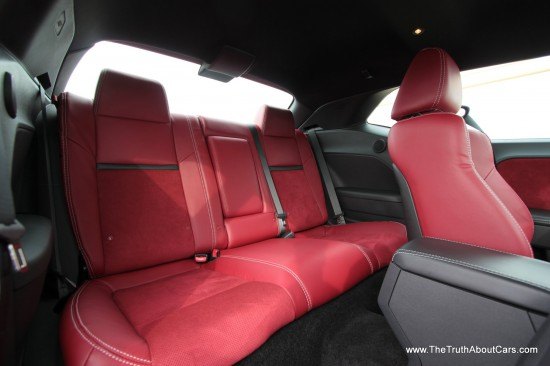

























































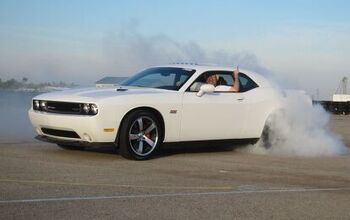
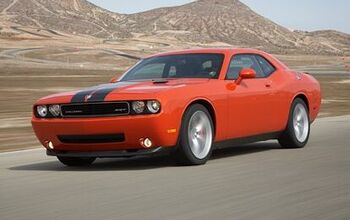
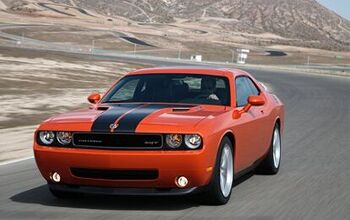
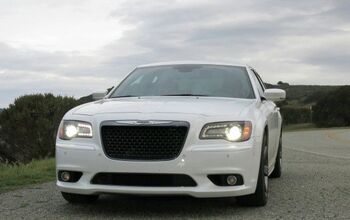
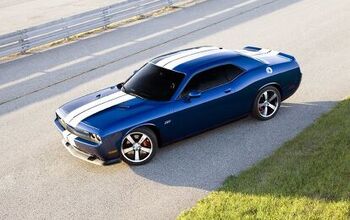










Comments
Join the conversation
Excellent video review. Thanks! If I had space in the garage, I'd tell the wife we're buying one. (A guy can dream, right?)
I just recently purchased the 2013 Challenger SRT8. It is absolutely one incredible car and love the power it has whenever I need it. Turns a lot of heads for sure. I had a Challenger in high school so I am loving the new retro look. It has attitude.